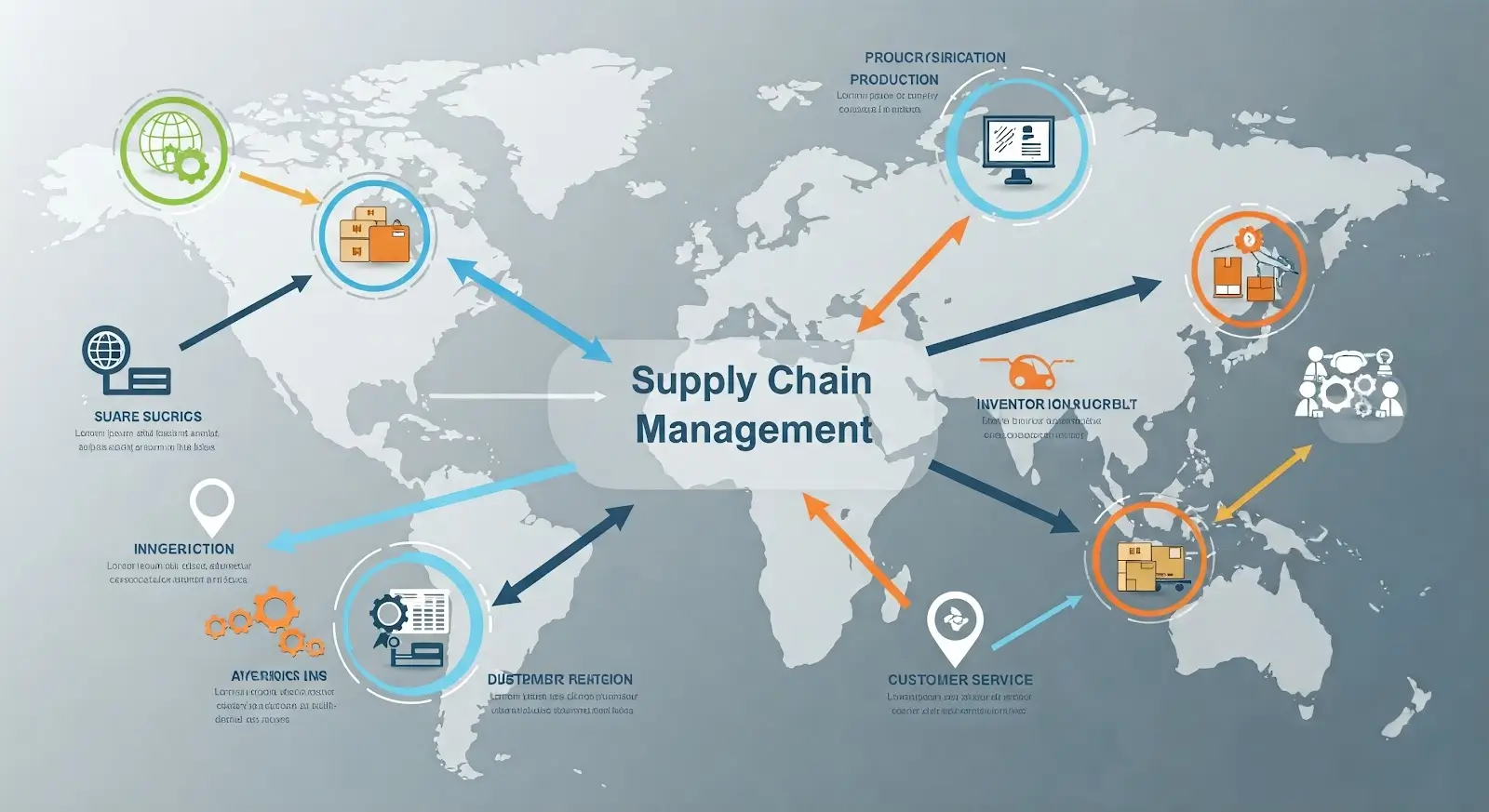Managing the costs associated with supply chain operations is crucial for maintaining profitability and efficiency.
Supply chain management encompasses a wide range of activities from procurement to logistics and warehousing, all of which can significantly impact a company’s bottom line.
By implementing effective cost reduction strategies, businesses can streamline operations, reduce waste, and enhance overall performance.
Importance of Cost Reduction in Supply Chain Management
Reducing costs in the supply chain is vital for several reasons. First, it directly impacts profit margins, allowing companies to offer competitive pricing without compromising on quality.
Additionally, cost reduction can improve operational efficiency by identifying and eliminating inefficiencies and redundancies within the supply chain processes. Companies that succeed in minimizing supply chain costs can reinvest the savings into innovation, enhancing their market position.
How Cost Optimization Improves Efficiency and Profitability
How to reduce logistics costs? Optimizing supply chain costs enhances efficiency by ensuring that resources are used effectively and operations run smoothly.
Improved efficiency leads to faster turnaround times, better inventory management, and reduced lead times, all of which contribute to a more responsive and agile supply chain. As a result, businesses can better meet customer demands and outperform competitors. Moreover, higher profitability can be achieved by lowering operational costs and reducing waste, which in turn increases the overall financial health of the company.

Understanding Supply Chain Costs
Understanding the various components that contribute to supply chain cost optimization is essential for identifying areas where savings can be made.
Key Cost Components in Supply Chain Management
- Procurement and Raw Materials:
The cost of procuring raw materials is a substantial part of supply chain expenses. Effective procurement strategies, such as bulk purchasing and long-term supplier agreements, can help negotiate better prices and reduce costs. - Transportation and Logistics:
Transportation includes costs related to shipping goods from suppliers to warehouses and customers. Optimizing routes, selecting cost-effective carriers, and leveraging technology for route planning can significantly reduce transportation expenses. - Warehousing and Storage:
Costs associated with storing inventory, including rent, utilities, and labor, can be optimized by improving inventory management practices, such as just-in-time (JIT) inventory and using automated warehouse systems. - Labor and Operational Costs:
Labor costs are incurred from hiring and managing employees involved in supply chain operations. Streamlining workflows, investing in employee training, and employing automation can lower labor costs and enhance productivity.
The Impact of High Supply Chain Costs
Here are its impact:
- Reduced Profit Margins:
High supply chain costs eat into profit margins, limiting a business’s financial flexibility and growth potential. Beyond operational expenses, servicing multiple loans and credit lines can be a significant financial drain. In such cases, debt consolidation can be a powerful strategy to reduce monthly payments and improve cash flow. Effective cost management like this helps businesses maintain healthy profit margins and sustain growth. - Inefficiencies in Logistics and Operations:
Excessive costs often indicate underlying inefficiencies in logistics and operations that need to be addressed. Identifying and eliminating these inefficiencies can lead to significant cost savings. - Increased Customer Prices and Competitiveness Issues:
Elevated costs may lead to higher product prices, impacting the company’s competitiveness in the market. Reducing supply chain costs can allow for more competitive pricing, improving customer satisfaction and market share.
By understanding and strategically managing the various cost components in supply chain management, businesses can significantly enhance their efficiency, profitability, and competitiveness in the global market.

Strategies for Cost Reduction in Supply Chain Management
Implementing supply chain cost-saving strategies are essential for enhancing efficiency and maintaining competitive advantage. Here are several key strategies that can be employed to achieve cost reduction:
Optimizing Procurement and Sourcing
- Negotiate Better Contracts: Establish long-term agreements with suppliers to secure lower prices and stability.
- Bulk Purchasing: Purchase in larger quantities to benefit from economies of scale.
- Supplier Diversification: Avoid over-reliance on a single supplier and reduce risks by diversifying supplier base.
- Supplier Collaboration: Work closely with suppliers to improve product quality and reduce costs.
Enhancing Inventory Management
- Just-In-Time (JIT) Inventory: Reduce inventory holding costs by receiving goods only as they are needed in the production process.
- Demand Forecasting: Use advanced forecasting techniques to predict demand accurately and prevent overstocking or stockouts.
- Inventory Turnover Analysis: Regularly analyze inventory turnover rates to ensure optimal stock levels.
- Cycle Counting: Implement cycle counting in place of annual physical inventories to maintain inventory accuracy.
Improving Transportation and Logistics
- Optimize Routes: Use route optimization software to find the most cost-effective and efficient delivery routes.
- Consolidate Shipments: Combine multiple shipments to reduce transportation costs.
- Select Cost-Effective Carriers: Evaluate and choose carriers based on cost, reliability, and service quality.
- Implement Cross-Docking: Reduce handling and storage costs by transferring products directly from incoming to outgoing transportation vehicles.
Reducing Warehousing and Storage Expenses
- Warehouse Layout Optimization: Create an efficient warehouse layout to minimize movement and pick times.
- Automated Systems: Invest in warehousing automation technologies like robotics and automated storage/retrieval systems.
- Energy Efficiency: Implement energy-saving measures to lower utility costs in warehouses.
- Space Utilization: Maximize storage space through better shelving and stackability.
Leveraging Technology for Cost Efficiency
- Supply Chain Management Software: Utilize software solutions to streamline operations, increase visibility, and optimize processes.
- IoT and Sensors: Implement IoT technologies for real-time tracking and monitoring of goods.
- Big Data and Analytics: Employ analytics to gain insights and make data-driven decisions.
- Blockchain: Use blockchain technology for secure and transparent transactions.
Streamlining Labor and Workforce Efficiency
- Training and Development: Invest in employee training to enhance skills and productivity.
- Automation: Use automation to perform repetitive tasks and reduce labor costs.
- Lean Management: Apply lean principles to eliminate waste and improve operational efficiency.
- Flexible Workforce: Utilize a flexible labor model to adapt to changing demand patterns.
Measuring and Monitoring Cost Reduction Success
- Key Performance Indicators (KPIs): Establish and track KPIs such as cost savings, inventory turnover, and order fulfillment rates.
- Regular Audits: Conduct regular audits to identify areas for improvement and ensure compliance with cost reduction strategies.
- Benchmarking: Compare performance against industry standards and best practices.
- Continuous Improvement: Foster a culture of continuous improvement through regular feedback and process refinement.
Common Mistakes to Avoid in Supply Chain Cost Reduction
- Overlooking Supplier Relationships: Neglecting supplier relationships can lead to cost increases and quality issues.
- Ignoring Hidden Costs: Focusing only on visible costs can overlook hidden costs such as obsolescence and returns.
- Inefficient Communication: Lack of communication can lead to misunderstandings and inefficiencies in the supply chain.
- Short-Term Focus: Prioritizing short-term gains over long-term sustainability can damage overall supply chain health.

Achieving Long-Term Success in Supply Chain Cost Management
Effectively managing supply chain costs is not merely a preferred strategy but a crucial necessity. At LSI, we understand the importance of integrated and strategic approaches to supply chain management.
By leveraging our insights and solutions, businesses can achieve significant cost reductions while maintaining—or even enhancing—efficiency and customer satisfaction. For more information on how LSI can assist your business in streamlining supply chain costs, visit LSI.





